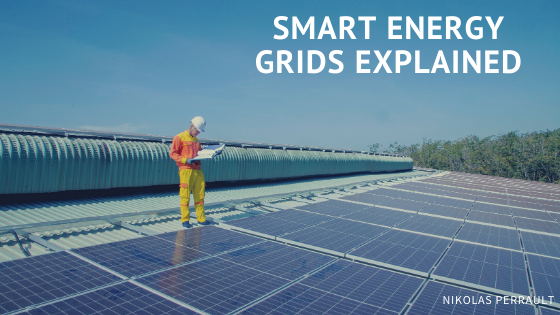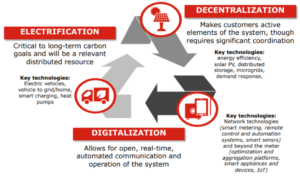A smart energy grid is a two-way electrical framework that relies on Big Data Analytics and IoT technologies to enable smart metering of electricity. The advantages of smart grids include a more efficient method of electricity transmission, a quicker containment and restoration after electrical emergencies, lowered costs for utility operations and management teams, and lower energy bills for consumers. Smart grids enable customers to become more proactive and educated about their electricity usage as they evolve into prosumers who also contribute to the electricity supply. In addition to residential customers, businesses also use smart meters to track their energy and track how costs differ according to building areas.
While not the only component of smart grid technology, smart meters are a subset of the advanced metering infrastructures (AMI) that are being used for water, gas, and electric utilities. Because of IoT technology, appliances can be automatically turned on or off based on pricing or demand. The readings on electricity usage are communicated to both the consumer and electricity suppliers. Fault location, isolation, and service restoration technology (FLISR) is another factor that makes smart grids efficient and cost-saving. Continuous self-assessments serve as a way to minimize blackouts because they inspect and analyze the grid, detect, react to, isolate the problem to reduce damage, and communicate to humans every detail through tracking.
Smart grids are an essential component of the electricity sector’s digital transformation and another step toward a significant re-engineering of the electric services industry. The electricity industry has been changing over the past decade for numerous reasons, including the energy market’s deregulation, advancements in metering technology and other IoT devices, the decentralization of energy freeing up the national grid, and consumers’ evolution prosumers.
The opportunity for smart grids has become a reality thanks to digital substations, more efficient methods of preventing and handling outages, an increased focus on green energy, the inclusion of microgeneration which enables organizations and more extensive facilities to join prosumers in generating their own power and supplying it to the central network grid, improved methods of energy storage, ways to enhance security, alternative transmission methods, and the design of more stable electrical grids.

